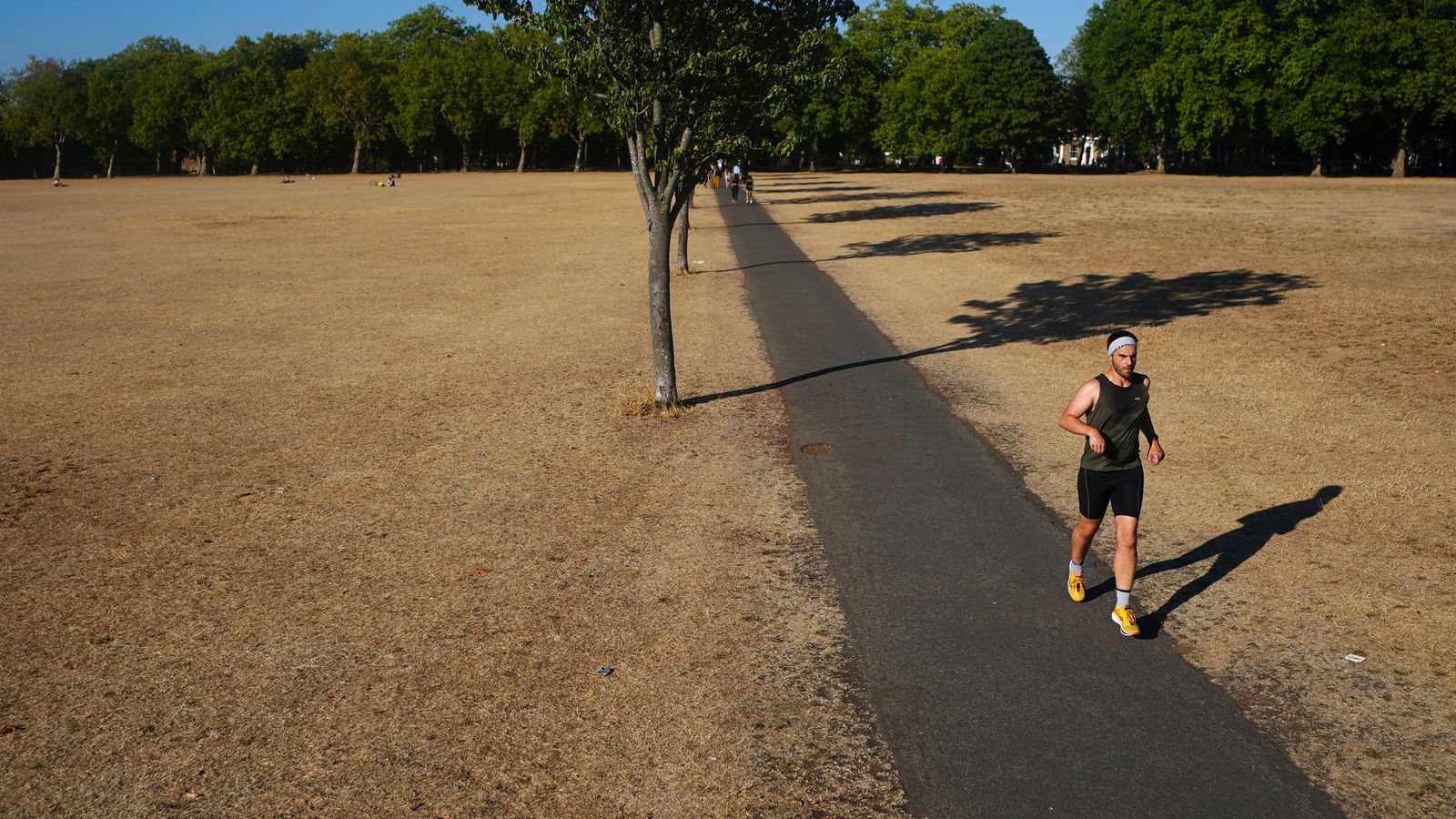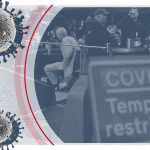Droughts have been declared in parts of southwest, southern and central England and all of eastern England as high temperatures continue to fry the country.
The affected areas are:
• Devon and Cornwall
• Solent and South Downs
• Kent and South London
• Herts and North London
• East Anglia
• Thames
• Lincolnshire and Northamptonshire
• East Midlands
The announcement means residents in those areas can expect to see restrictions placed on domestic and commercial water use.
Another water company imposes hosepipe ban – weather latest
While moving to drought status does not automatically trigger actions itself, it does mean the Environment Agency and water companies will implement stages of pre-agreed plans.
These plans follow local factors including reservoir levels, water demand and forecasts, and lead to temporary use bans, such as hosepipe bans, being introduced.
UK heatwave: Britain’s green landscapes turn brown as river flows drop
Europe drought: Images show extremely low water levels along Rhine River as officials warn transport of goods could be affected
Warm weather brewing could fuel another heatwave, Met Office says
Residents and businesses in the affected areas have been urged to be “very mindful” of the pressures on resources and told they should use water wisely.
“We are currently experiencing a second heatwave after what was the driest July on record for parts of the country,” Water Minister Steve Double said.
“We are better prepared than ever before for periods of dry weather, but we will continue to closely monitor the situation, including impacts on farmers and the environment, and take further action as needed.”
The Environment Agency has said essential supplies of water are safe, and it is urging water companies to continue with their precautionary planning.
Many parts of the country are experiencing sweltering temperatures and little rainfall, with an amber extreme heat warning now in place until Tuesday 16 August.
By Friday afternoon, temperatures are set to soar as high as 35C (95F) in southern areas of the UK, which will be hotter than the Bahamas, Jamaica and Barbados.
Please use Chrome browser for a more accessible video player
Five consecutive months of below-average rainfall
The ongoing dry conditions – after the driest July on record for some areas and combined with last month’s record-breaking heatwave – have depleted rivers, reservoirs and aquifers.
According to the Environment Agency, there have been five consecutive months of below average rainfall across all geographic regions in England and above average temperatures.
As a result, soils have dried up, hitting agriculture, water supplies and wildlife and raising the risk of wildfires.
Sky News analysis showed this year has been considerably drier than usual in two-thirds of Great Britain’s counties.
Read more:
Hosepipe bans: What are the rules – and what are the exemptions?
What and where is the ‘exceptional’ fire risk – and how to avoid one
What is a drought?
Although all droughts are caused by a period of low rainfall, there is no single definition for one, meaning each is different.
The nature, timing and effects varying according to location, and which sectors are affected such as public water supply, agriculture, the environment, or industry are considered when declaring one for an area.
The National Drought Group made up of senior decision-makers from the Environment Agency, government, water companies, and key representative groups met earlier on Friday before announcing the drought status.
There are four stages of drought:
• Prolonged dry weather stage (yellow) – where the possible impacts include a heightened risk of environmental damage such as a risk to wildlife and plants
• Drought stage (amber) – stress on public and private water supply sources, reduced agricultural and horticultural crop yields, localised wildfires and long-term habitat and wildlife impacts
• Severe drought stage (red) – widespread long-term environmental damage, widespread wildfires, failure of crops or plants and shortage of fodder and drinking water for livestock, failure of public and private water supplies
• Recovering drought stage (amber) – which depends on the type and severity of the preceding drought
The two most recent droughts were declared in 2018 and a more severe one in 2011.






















